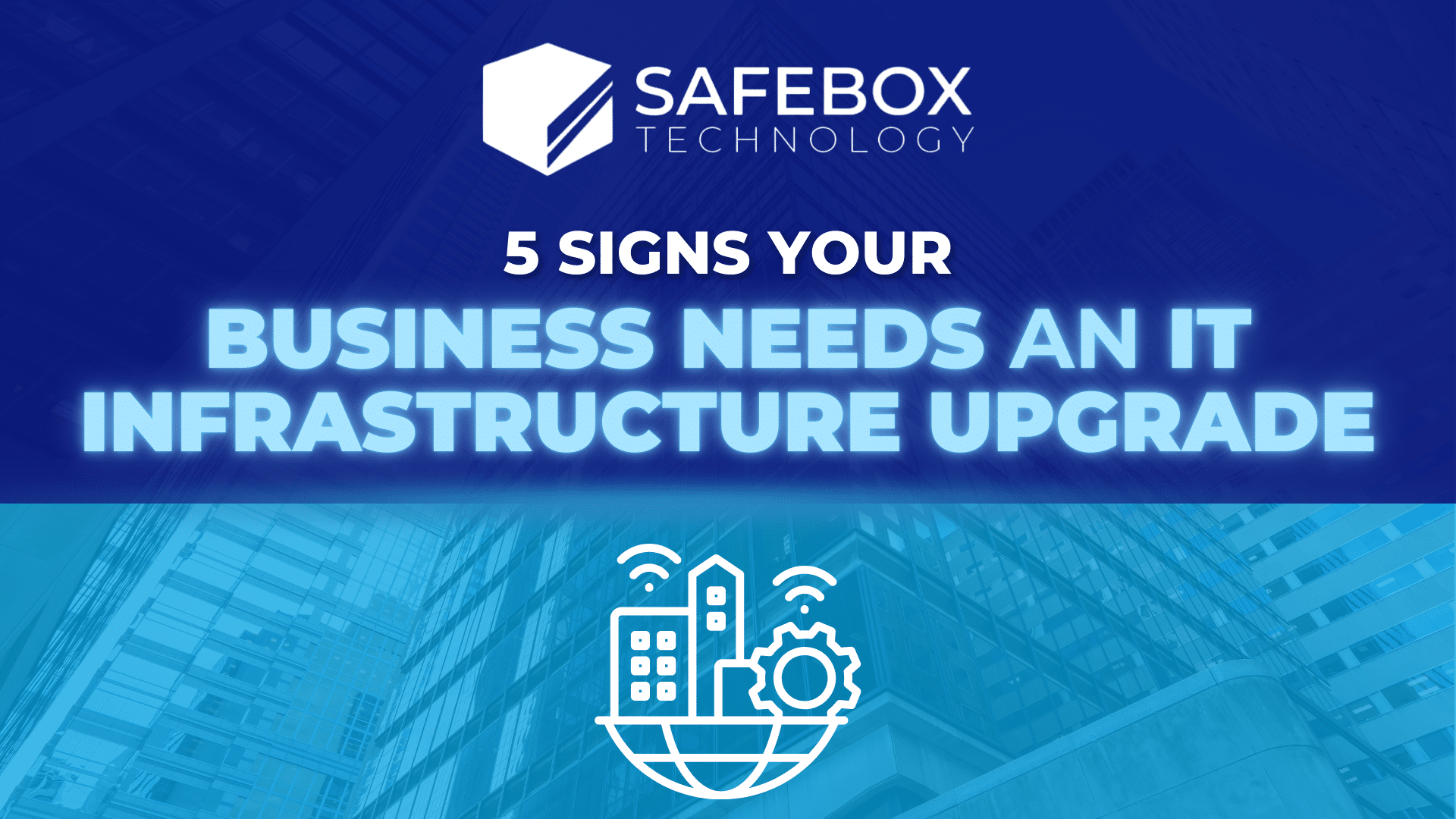Most small to mid-sized businesses don’t consider IT infrastructure needs until something breaks. A network slows down, a server crashes, or a critical software update won’t install, and suddenly, the tech stack that once felt “good enough” is holding everything back.
In reality, aging infrastructure seldom fails abruptly. Small problems like more downtime and slower performance add up over time until the effects on daily life can’t be ignored any longer. Recognizing the signs of outdated IT infrastructure early is how businesses stay ahead of disruption, maintain security, and protect growth momentum.
Why Infrastructure Upgrades Matter More Than You Think
For many small business owners, upgrading IT systems may seem expensive or unnecessary until the cost of inaction increases. Whether it’s compliance issues, security vulnerabilities, or the inability to meet customer expectations, the flaws in aging technology don’t remain hidden forever. Think of your IT infrastructure as your entire business’s digital foundation. When it weakens, everything above it is at risk. Early detection of the warning signs can make the difference between a smooth transition and a business-stalling emergency.
So, how do you know when to upgrade IT systems? Let’s explore five often-overlooked indicators that signal it’s time to consider a business technology upgrade and why ignoring them could cost more than you think.
1. Performance Bottlenecks Are Slowing Down Productivity
If employees consistently report sluggish software, frozen screens, or slow file access, it’s not just a tech issue; it’s a productivity issue. Legacy systems often can’t support modern apps, cloud services, or high-volume data transfers without bottlenecks. Worse, these delays compound over time.
And it’s not always hardware that’s at fault. Outdated operating systems, business apps that aren’t supported, and internal networks that are getting old can all quietly slow things down, and users will get used to it instead of asking why things are taking so long.
2. Security Risks Are Increasing, Not Decreasing
Security is no longer just a concern for large enterprises. Small businesses are increasingly in the crosshairs of cybercriminals, and outdated infrastructure makes an easy target. Unsupported software, missing patches, and legacy firewalls leave dangerous gaps.
The Federal Bureau of Investigation’s Internet Crime Complaint Center (IC3) reported that cybercrime losses surged by 33% in 2024 to reach $16.6 billion. Most of these attacks targeted outdated systems that had not received updates for several years.
Businesses with “set it and forget it” infrastructure and unsupported vendor tools should consider this a significant warning sign. A proactive business technology upgrade that includes modern endpoint protection, real-time monitoring, and regular patching can dramatically lower risk exposure.
3. You’re Struggling to Support Hybrid or Remote Teams
The current workforce demands flexible work arrangements, yet traditional IT systems hinder achieving this flexibility. Remote staff members require secure VPN connections, cloud-based collaboration tools, and consistent system performance across different devices and locations.
The lack of infrastructure designed for hybrid work environments has likely caused your organization to experience problems with access consistency, video call interruptions, and storage limitations. The symptoms point to a fundamental mismatch in infrastructure design.
The standardization of Microsoft 365 and Google Workspace scalable cloud servers for distributed teams makes infrastructure upgrades for mobility and accessibility essential for operational survival. Your organization needs to reassess its IT infrastructure needs because you continue to manage various remote access solutions.
4. Your Tech Spend Is Rising Without Better Outcomes
Many businesses experience situations where IT expenses rise continuously without improving performance levels. Your organization continues to invest in temporary solutions, software subscriptions, and outside technical support while maintaining ongoing system issues.
Your infrastructure has reached a point where it no longer provides cost-effective operations. A complete infrastructure upgrade can make your tech environment easier to use by combining tools, lowering maintenance costs, and making it easier to add more users.
Moving on-premises servers to a secure cloud environment enables organizations to avoid physical hardware expenses while reducing energy usage and improving system availability. The investment goes beyond simple cost replacement because it builds operational health for the long term.
5. You Can’t Scale Without Breaking Something
Finally, whenever you hire a new employee or launch a new service, your IT systems buckle, and you’re overdue for an upgrade. Growth should never feel like a threat to stability.
Whether its limited user licenses, server capacity maxing out, or insufficient network bandwidth, outdated infrastructure creates fragile systems that can’t scale. And when systems are delicate, growth gets throttled.
Modernizing your technology foundation enables you to confidently scale your operations through staff onboarding automation tool integration and new location expansion. Your current infrastructure selection determines your short-term speed and future growth potential.
The Bottom Line: Don’t Wait for a Failure to Make the Right Move
Tech failures create both inconvenience and substantial costs for businesses. All problems that stem from foundational issues lead to lost productivity, security breaches, team frustration, and missed opportunities. Spotting the signs of outdated IT infrastructure early gives you a competitive advantage.
The real question is not if your business will need system upgrades, but rather when you should implement those upgrades to ensure you are prepared.
At Safebox Technology, we assist small to mid-sized businesses in determining essential IT infrastructure needs, developing future-proof infrastructure upgrades, and executing smooth transitions that reduce business interruptions and deliver maximum value.
Ready to find out where your infrastructure stands?
Contact Safebox Technology today. Let’s make sure your systems are ready for whatever comes next.

